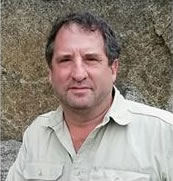

Permanent · Passive
Net-Zero Energy · Comfortable

AAC is a special lightweight concrete product that was invented in Sweden in the 1920s. Today it is used throughout the world and manufactured in over 350 plants around the globe. It is structural, easy to install, unaffected by water or fire, and airtight. AAC acts
as insulation, doesn’t support the growth of mold, and provides abundant comfort through its inherent mass. Passive Dwellings advocates the use of reinforced AAC in walls and floors (and on occasion, roofs) due to its unmatched properties.

Steve Bluestone used AAC panels to create an innovative envelope design used in rebuilding three Staten Island homes destroyed by Superstorm Sandy, and worked with the development / design / construction teams at The Bluestone Organization to build the Passive House-certified homes to a new level of resiliency. If another major storm strikes Staten
Island, the occupants of these elevated dwellings will be able to stay safely sheltered in place, and won’t have to worry about replacing water-saturated insulation materials in their exterior walls. During power outages, these high-mass, well-insulated homes will easily maintain survivable indoor temperatures for their occupants for an extended period of time.
 Steve Bluestone, founder of Passive Dwellings, has worked as a developer, general contractor, and property manager, producing thousands of units of housing and tens of thousands of square feet of retail space. Whether working on single-family homes or very large mixed-use apartment buildings, he has helped produce structures that have reduced energy consumption by 90% and
Steve Bluestone, founder of Passive Dwellings, has worked as a developer, general contractor, and property manager, producing thousands of units of housing and tens of thousands of square feet of retail space. Whether working on single-family homes or very large mixed-use apartment buildings, he has helped produce structures that have reduced energy consumption by 90% and
more, others that are net zero, and some that are energy-positive. He has been an industry leader in energy efficiency for decades and continues to pursue his passion of researching new products and systems and introducing innovative building methods. He has spoken at numerous building and energy conferences and continues to share his knowledge to inspire the industry to reduce overall energy and water consumption.